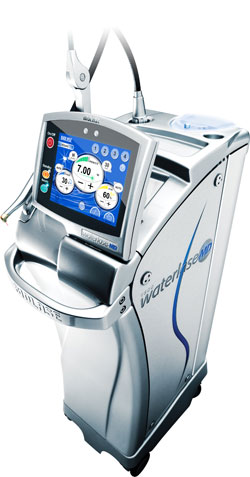
Being afraid of the potential pain is one of the reasons why most people shy away or keep on putting away their visit to the dentist. The good news is that there is a wide variety of techniques including medications that can help one battle this pain, and even manage anxiety in most cases. Here at LB Dental, we use Waterlase Pain-Free Dental Technology to help make your visit to the dentist an easier experience. But let’s also look at other common practices:
Topical Anesthetics
This anesthetic is put on with a cotton swab to numb around the dental area around the gum and mouth. This anesthetic is administered before the injection is administered for a local anesthetic like Lidocaine.
Laser Drills
Most dentists today rely on lasers to treat decay so as to prepare the tooth for filling. The reason this method is so popular is because lasers cause less pain and because of that automatically cut down on the need for anesthesia.
The Electronically Delivered Anesthesia
This is also referred to as TENS. It is a substitute to the injection of an anesthetic. It involves adhesive pads being placed on your face and a device powered by battery to send electrical impulses around the area that is to be treated. This is what numbs it.
The patient is the one to control the level of stimulation via a hand held unit. A different version of electronic anesthesia is then administered. This form is referred to as cranial electrotherapy stimulation. Under this technique, the electricity is passed into the brain which leads to you feeling relaxed. At this point, the patient gets to control the intensity of these currents and increase or decrease it so as to control the pain as is needed. Advantages of these approaches include the fact that as soon as you switch off the device the influence of the anesthetic pulse is reversed. The patient can engage in all normal activities like driving.
Nitrous oxide
This is more commonly identified as laughing gas. The gas is inhaled by the patient through a rubber mask. The gas is meant to help people feel relaxed and happens to be one of the most common forms of sedation for various purposes. Also, the effects of nitrous oxide wear off once you cease administering it.
Intravenous Method
This form of sedation is all about injecting a sedative into a patient’s arm or their hand. The approach is reserved for patients who undergo massive dental procedures or for patients who are really anxious. During this procedure, the dentists are the ones who monitor the oxygen that is being received by the patient. IV sedation means that the patient is awake but at the same time very relaxed.
The General Anesthesia
This is one technique where the patient is put to sleep for the whole time this procedure is underway. Patients who are administered this are commonly the ones being treated at a hospital setting. The reason behind this is that there are certain risks associated with this type of anesthesia, including drop in blood pressure and irregular heart beat. Therefore, this is the number one procedure where patients are closely monitored.
Why Waterlase?
WaterLase is a cold laser technology developed by BIOLASE (www.biolase.com) for use in dental procedures. It combines air, water and laser energy to provide a cool, virtually pain-free experience. At LB Dental, we use the WaterLase laser instead of traditional dental drills, which provides many benefits to our patients. Call us today at 602-482-5100 to see if Waterlase can help you.
